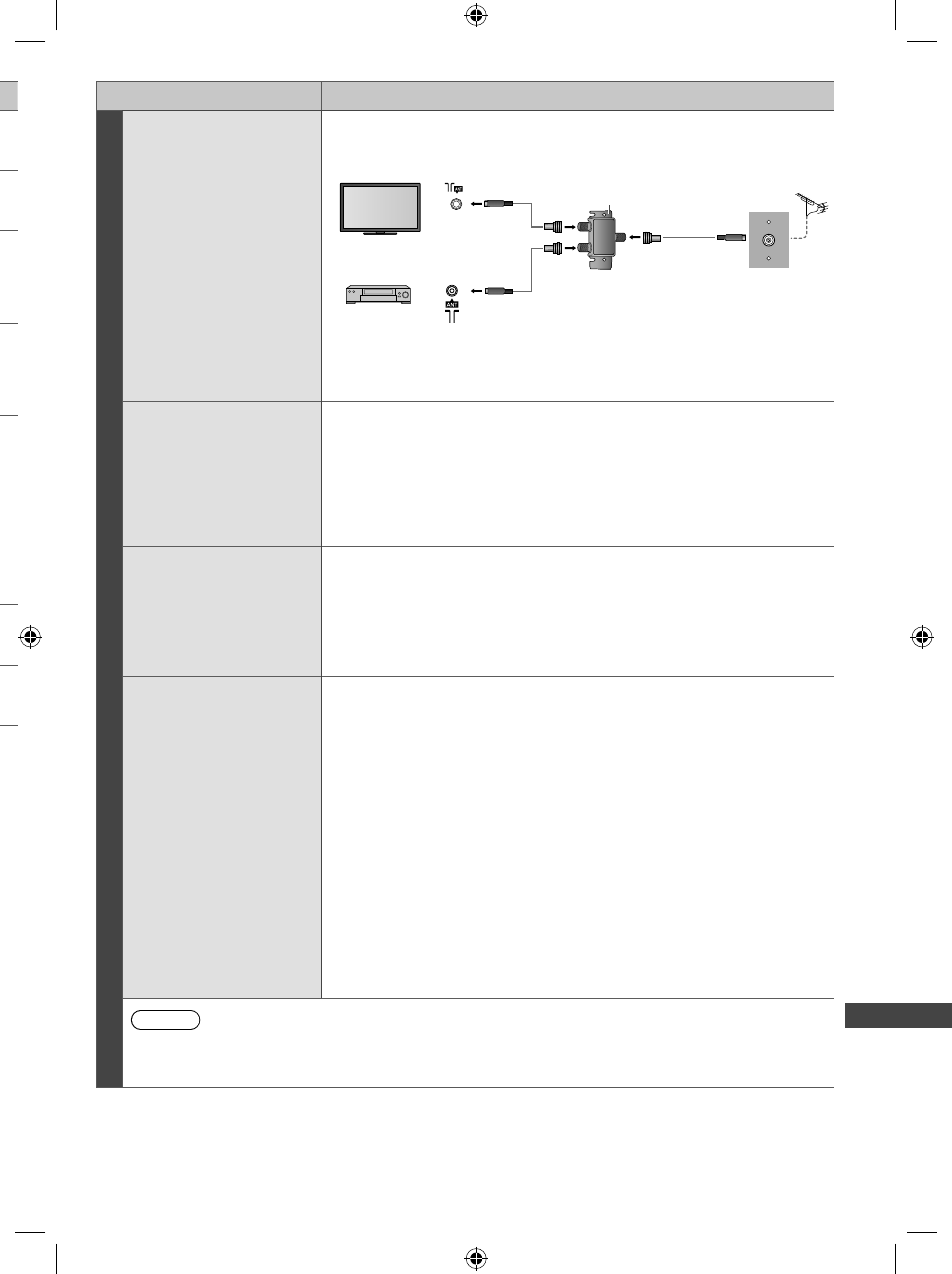
FAQs
89
Problem Causes / Actions
Digital TV
Connecting devices such
as DTV recorder / PVR /
VCR etc that also require
an antenna connection to
the digital television
●
To maintain optimum antenna signal quality, use an ‘F’ type TV signal splitter
(as illustrated) when connecting two or more devices to the same antenna
socket.
TV
DTV Recorder / PVR / VCR
Out
In
‘F’ type Antenna Splitter
Antenna Socket
Wall Plate
RG6Q Fly Lead
RG6Q Fly Lead
RG6Q Fly Lead
●
Hint: Some degradation of the DTV signal may occur if you are connecting the
aerial through an external device (e.g. DVD Recorder or Set Top Box). In
this case it is better to use a splitter and connect the aerial directly to both
devices.
After digital TV tuning, (or
re-tuning) some or all DTV
channels are missing
●
Check to ensure your area is covered by DTV transmissions.
●
Check that the aerial and antenna cable are designed for DTV reception. If
you live within 5-10 km of DTV transmission towers, a combined VHF / UHF
Digital TV aerial should be adequate. Outside this area, separate VHF and UHF
aerials provide superior reception performance.
●
If you live in a unit or apartment, check to ensure the Master Antenna TV
(MATV) system is designed for analogue and DTV reception. Please consult
your body corporate.
Picture infrequently
pixelates on some or all
channels
●
Electrical interference caused by local or distant lighting storms, heavy rain,
high wind etc. may cause picture to break up and or audio to mute / distort
momentarily.
●
Impulse noise interference from an infrequently used electrical appliance, or a
passing vehicle or lawn mower with a “noisy” ignition system.
●
Older style antenna cabling, loose fitting/corroded wall socket connections /
terminals etc.
Picture regularly pixelates
on some channels, or ‘No
Signal’ message
●
Check [Signal Condition] via TV Setup menu. If [Signal Quality] or [Signal
Strength] is red/orange or constantly changing, check aerial/cable/connections.
If problem persists, consult your local TV antenna installer.
●
Too much signal; is [Signal Strength] always at full strength? If yes, try
attenuating (reducing) the signal strength.
●
Check that the aerial and antenna cable are designed for DTV reception.
●
The received signal may be too weak to allow the TV to reliably lock to the
selected channel to generate a viewable picture. If problem persists, consult
your local TV aerial installer.
●
Interference from household appliances (known as impulse noise) such as
light switches, fridges etc. may cause picture break up and / or audio distortion.
Use high quality quad shielded coaxial cable (RG6Q) fly lead between TV and
antenna wall socket to minimise impulse noise pickup. If problem persists,
consult your local TV aerial installer.
●
Antenna installation may be using an aerial amplifier that is faulty or an older
style aerial amplifier that was not designed for digital TV.
●
Older style antenna cabling, loose fitting / corroded wall socket connections /
terminals etc.
●
Turn the TV off with the Mains power On / Off switch, then turn it On again.
Note
Digital TV reception is only as good as the antenna and the antenna cabling delivering the DTV signals to the
television. Reliable digital TV reception requires high quality, robust DTV signals which can only be achieved
when using a TV antenna and cabling designed for digital TV reception.
th-l32_42_47e5z.indb 89th-l32_42_47e5z.indb 89 3/20/2012 11:49:06 AM3/20/2012 11:49:06 AM


















